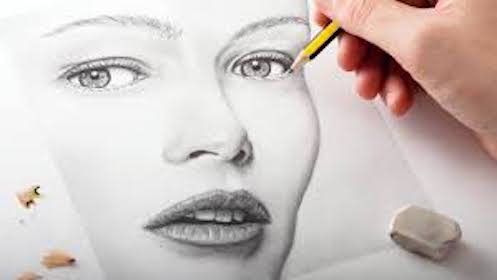How To Draw Portraits that Resemble the Original
Do you want to learn how to draw a portrait? Bringing life to portraits involves sets of skills and experience in depicting human images. Both are not automatically earned in just a single try. With lots of practice and hard works anyone can learn the art of drawing portraits that resemble the original.
Lots of ways were done and practiced by many great artists but the most common and easiest way is to draw a portrait of a non moving mode. In simple words that could mean a photograph picture.
One of the basic skills in drawing is shading. It can be gained through long term practice. Shading is the main key on giving your portrait’s tone and contrast and also used to cast shadows that will make your illustrated image as realistic as possible. Lines used to emphasized cartoon characters are replace by shaded parts in a portrait. The easiest way or procedure in drawing your portrait is given below.
Outline the Correct Proportions of the Featured Parts
Choose a picture and begin outlining your drawing. Positions and proportions must be correct. These are the basic elements of a brilliant art work. A single mistake on this one could lead to worst case and frustration. Some people divide the picture plane into small squares just to have the exact portion on their image. In our case we’re going to outline the face of the Hollywood actor Mr. Will Smith rotated a little bit with our imagination for it to appear as if he is facing us. We are also going to remove his hat to expose his hair. The picture is illustrated on the right.
The Parts
Most of the artist pays more attention to the eye, just as they say the eye is the window of one’s soul. The eye conveys the feeling on your portrait and the first thing that caught the attention of the viewers. Using different kinds of pencils may help you give the exact tone on your portrait’s eyes. Another example on giving your eye’s feeling is by leaving white spots on its iris, that will make it seems alive.
The nose is considered as one of the easiest part to draw in a portrait. Drawing the nose doesn’t need many emphasized lines. Instead we shade part of it to see the clear picture of the nose’s bridge and nostrils. Apart from the other parts especially the eye, the nose does not give too much expression or emotional response to the viewers. The problem on why most people say that the nose is difficult to draw is that maybe they focused too much on drawing lines just to give shape on it.
The mouth or the lips of portraits and painting communicates emotion same with the eyes. Both must have same expressions in accordance with the situation portrayed. The portrait as a whole gives a definite response by the projections and combination of the said parts. By exactly depicting the lips gives life to your portrait, on the other hand doing the opposite may ruin it. Learn how to draw glossy lips by just shading. Images drawn often look real when the mouth is well-drawn and shaded.
Other people hide the ears in many ways. With that they can proceed to the other step without thinking too much about the ear. But that could reduce the beauty of your portrait. It is important to include it to give a fair proportion on the shape of your face.
The hair may look easy to draw but in reality it is considered as a complicated part to depict. It doesn’t only require a good background or talent in shading but also attitude. The best hair is the one that was done through patience. Yes, patience. It is an amazing job for an artist to emphasize every strands of the hair. It will take time to finish the hair just to emphasize its quality and texture. Learn how to highlight other portions of your hair making distinction from other strands.
Finishing touches
The last step is simply shading some portions on your face. Erase the outlines and other exceeding lines and shades. Now you are done drawing a portrait that resembles its original model.
Anyone can start drawing a portrait starting from anywhere of the image face, but that could be a crucial one. Starting to produce a copy on any position or angle will cause distortion and other unpredictable effects on your work. Proportions on sizes and tones are the very things that must be considered that is why a sequence of steps must be kept in mind.



